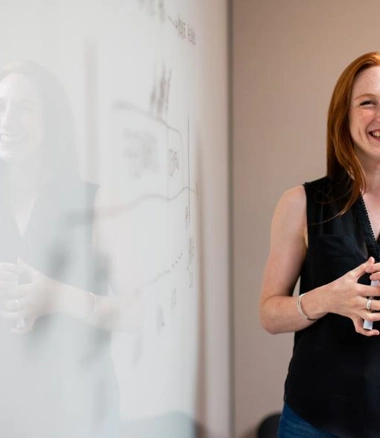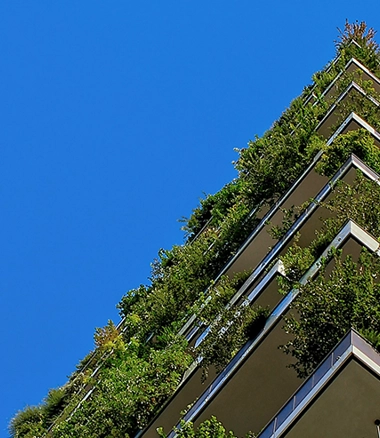
As a recruiter in the field of building services engineering, I can confidently say that carbon-neutral design is no longer a mere buzzword; it has become a driving force behind innovation and a key skill set sought after by employers. In this blog post, we will explore why building services engineers need to shift towards carbon-neutral designs, and how this shift is transforming the industry.
Embracing Carbon-Neutral Design: The New Imperative
The reality of climate change and its disastrous consequences is now impossible to ignore. The world is experiencing rising temperatures, extreme weather events, and the depletion of natural resources. As responsible stewards of the built environment, engineers must step up and play a crucial role in mitigating these challenges. The time for action is now.
Driving Innovation: The Power of Carbon-Neutral Design
Transitioning to carbon-neutral designs may seem daunting at first, but it is a catalyst for innovation and offers countless opportunities for engineers to make a meaningful impact. By embracing this paradigm shift, engineers can pioneer groundbreaking technologies and strategies that will reshape the future of the built environment.
For example, the integration of renewable energy systems, such as solar panels and wind turbines, into building designs can significantly reduce carbon emissions. The application of energy-efficient HVAC systems and advanced building automation can further optimize energy consumption, minimizing the overall environmental footprint of structures. These innovations not only contribute to a sustainable future but also position companies at the forefront of a rapidly evolving industry.
The Evolving Skills Landscape: Adapting to the Future
As the demand for carbon-neutral designs continues to rise, the skills and knowledge employers seek in building services engineers are undergoing a profound transformation. Technical prowess alone is no longer sufficient; professionals must possess a multidisciplinary skill set that encompasses sustainability, energy management, and renewable technologies.
Moreover, engineers must have a solid understanding of cutting-edge software and simulation tools that facilitate designing and optimising energy-efficient systems. Proficiency in Building Information Modeling (BIM) software, computational fluid dynamics (CFD) simulations, and energy modeling software are becoming essential requirements in job postings.
Challenging the Status Quo: The Economic Argument for Carbon-Neutral Design
Critics of carbon-neutral design often raise concerns about the associated costs. However, the assumption that sustainable practices are an economic burden is increasingly being debunked. In fact, embracing carbon-neutral designs can lead to long-term financial benefits for businesses.
A study conducted by the World Green Building Council revealed that green buildings, which incorporate carbon-neutral design principles, experience a significant increase in asset value and rental yields. Furthermore, by reducing energy consumption and operating costs, companies can achieve substantial savings over the lifespan of a building. In an era where corporate sustainability is gaining prominence, carbon-neutral designs can be a competitive advantage, attracting environmentally conscious investors, tenants, and customers.
Shaping a Resilient Future: The Role of Building Services Engineers
Building services engineers have the power to shape a resilient future by spearheading carbon-neutral designs. They are the driving force behind sustainable infrastructure, contributing to the achievement of global climate goals. By taking up the mantle of carbon-neutral design, engineers can become catalysts for change, leaving a lasting positive impact on society and the environment.
As you embark on your careers or consider new opportunities, we implore you to embrace the challenge of carbon-neutral design. Equip yourselves with the knowledge and skills necessary to create sustainable buildings that are not only aesthetically pleasing but also environmentally responsible. The time to act is now, and together, we can forge a better future.
Are You Ready to Lead the Way?
As specialist recruiters, we encourage you to reflect on your role as a building services engineer. Are you ready to embrace the transformative power of carbon-neutral design? Will you seize the opportunity to make a meaningful impact on the world around you? The choice is yours.
Consider the legacy you want to leave behind. Do you want to be known as an engineer who merely followed conventional practices, or as a visionary who pioneered sustainable solutions? By shifting towards carbon-neutral designs, you have the chance to become a trailblazer in your field, contributing to a sustainable future that benefits generations to come.
A Collaborative Effort: Uniting Forces for Change
Building a carbon-neutral future requires collaboration and collective action. Engineers cannot work in isolation; they must collaborate with architects, construction professionals, policymakers, and stakeholders to drive change at a systemic level.
Industry associations and organizations play a vital role in fostering collaboration and knowledge exchange. By joining professional networks such as the Green Building Council of Australia, or the Chartered Institution of Building Services Engineers (CIBSE), you gain access to valuable resources, training programs, and networking opportunities. These platforms enable you to learn from industry leaders, share best practices, and collaborate on innovative projects that push the boundaries of sustainable design.
The Urgency of Now: Seizing the Opportunity
The urgency of addressing climate change cannot be overstated. We are at a critical juncture where every decision and action matters. By shifting towards carbon-neutral designs, building services engineers have the power to be at the forefront of change and drive the transition to a sustainable future.
Imagine a world where buildings generate their own renewable energy, where heating and cooling systems are optimized for efficiency, and where the built environment exists in harmony with the natural world. This vision is within reach, and it is up to us, as engineers, to make it a reality.
The demand for carbon-neutral designs is rapidly increasing, and building services engineers must adapt to this new reality. By embracing sustainable practices, engineers can drive innovation, shape a resilient future, and contribute to global efforts to combat climate change. The skills and knowledge required are evolving, and engineers must equip themselves with the necessary tools to succeed in this changing landscape.
Now is the time to challenge assumptions, question traditional practices, and pioneer carbon-neutral designs.





